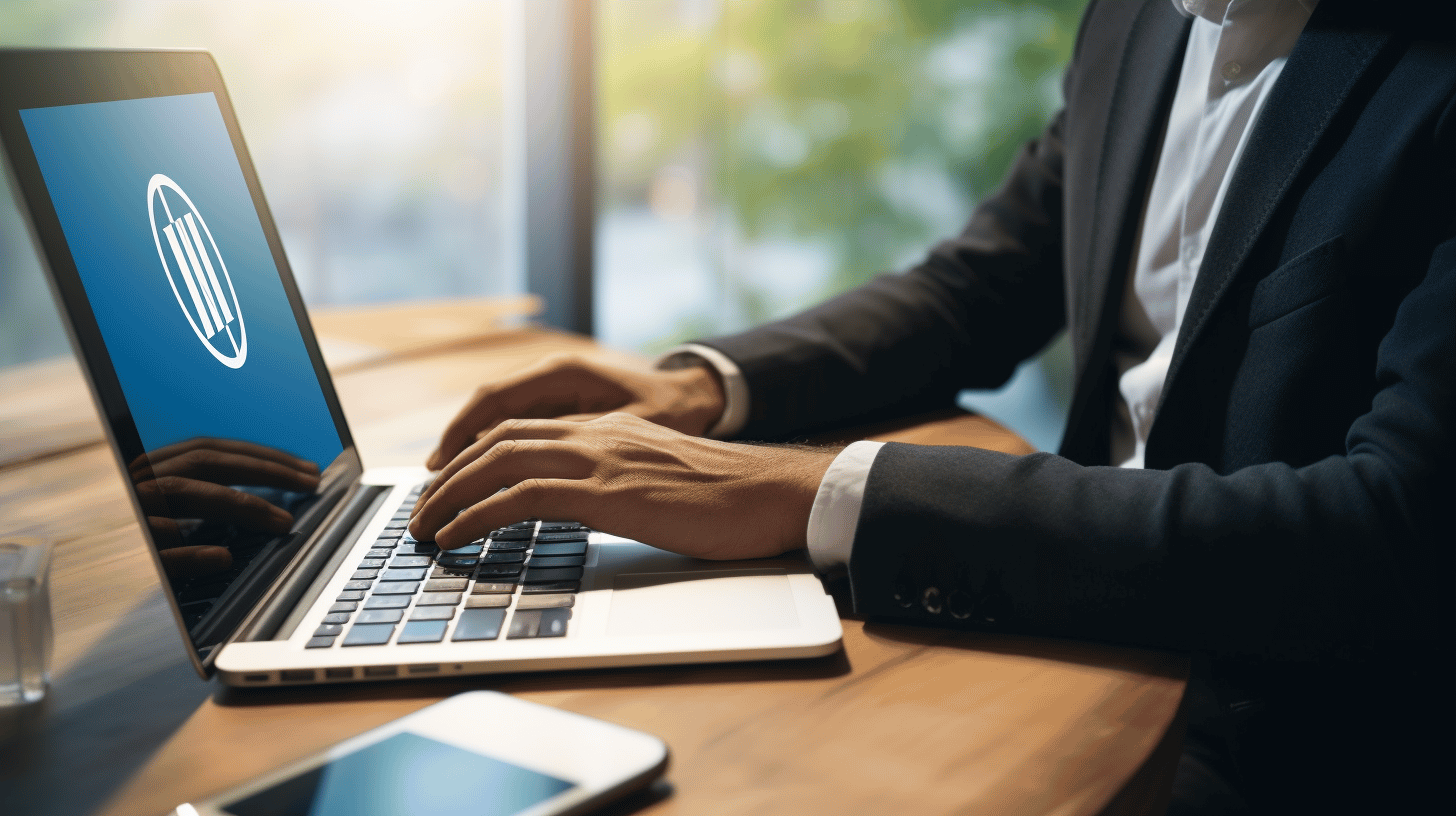保持 WordPress 网站更新对于维护其安全性、性能和与新技术的兼容性至关重要。然而,很容易推迟更新,最终导致网站容易受到安全漏洞的攻击、性能低下,并且与最新功能不兼容。
在本综合指南中,我们将探讨主动维护 WordPress 网站的重要性,并为您提供如何有效更新网站的实用技巧。无论您是经验丰富的 WordPress 用户还是刚入门的用户,本指南都将为您提供控制网站维护所需的知识和工具。
那么,让我们深入探索 WordPress 网站主动维护的世界吧!👨💻🚀
保持 WordPress 网站正常运行对于在线业务的成功至关重要。但是,仅仅设置网站并保持原样是不够的。定期维护是确保最佳安全性、性能和与不断发展的网络环境的兼容性的关键。在本文中,我们将从四个关键领域探讨主动维护 WordPress 网站的重要性:安全性、性能改进、错误修复和与新技术的兼容性。
安全原因
对于您的 WordPress 网站,安全应是重中之重。网站经常成为黑客和恶意行为者的目标,他们试图利用漏洞并获得未经授权的访问。如果忽视定期维护和更新,您的网站将容易受到此类攻击。
定期更新,例如最近 WordPress 6.3.2 维护和安全版本,在保护您的网站免受最新威胁和漏洞侵害方面发挥着至关重要的作用。这些更新通常包括针对已知安全问题的补丁和修复,有助于保护您的网站和宝贵的数据。
性能改进
您是否希望 WordPress 网站快速加载并提供无缝的用户体验?当然!主动维护的好处之一是可以改善网站的性能。
更新通常包括效率改进,可使您的网站性能更好。这意味着加载时间更快、导航更流畅,以及整体用户满意度提高。通过及时更新,您可以确保您的网站保持优化和响应,为访问者提供最佳体验。
问题修复
即使是最精心设计和开发的网站,有时也会遇到错误和故障。这些问题会影响网站的功能、可用性和整体用户体验。这就是主动维护的作用所在。
定期更新对于修复已发现的任何问题或错误非常重要。开发人员积极努力解决这些问题并发布补丁或更新来解决它们。通过定期更新您的 WordPress 网站,您可以确保及时解决任何错误或故障,最大限度地减少中断并确保您的网站顺利运行。
与新技术的兼容性
网络不断发展,新技术和新标准不断推出。浏览器、插件和主题也会不断更新,以保持与这些进步的兼容。为了在数字领域保持领先地位,让您的 WordPress 网站与最新技术保持同步至关重要。
更新对于确保您的网站与最新的浏览器和技术保持兼容起着至关重要的作用。定期维护和更新有助于防止因使用旧版本的 WordPress、主题或插件而引起的兼容性问题。通过保持最新状态,您可以利用新特性和功能,同时确保为访问者提供无缝体验。
总之,主动维护对于 WordPress 网站的寿命和成功至关重要。定期更新不仅可以保证网站的安全,还可以提供性能改进、错误修复和与新技术的兼容性。通过投资主动维护,您可以创建一个可靠且用户友好的在线形象,以满足不断变化的网络需求。所以不要忽视定期维护的重要性——您的 WordPress 网站值得拥有它!
保持 WordPress 网站更新对于确保其安全性、性能以及与最新功能和技术的兼容性至关重要。定期更新不仅可以保护您的网站免受漏洞攻击,还可以改善其整体功能和用户体验。在本文中,我们将探讨保持 WordPress 网站更新的基本步骤,包括更新 WordPress Core、插件、主题和 PHP 版本。
更新 WordPress 核心
WordPress Core 更新由 WordPress 开发团队发布,用于解决安全漏洞、修复错误并引入新功能。以下是更新 WordPress Core 的步骤:
- 备份您的网站:在进行任何更新之前,创建 WordPress 网站的备份至关重要。这可确保您在更新过程中出现任何问题时可以恢复到以前的版本。
- 检查更新:登录 WordPress 网站的管理仪表板并导航到更新页面。在这里,您可以查看 WordPress Core 是否有任何可用的新更新。
- 更新 WordPress 核心:如果有可用更新,只需单击“立即更新”按钮即可启动更新过程。WordPress 将自动为您下载并安装最新版本。
- 测试您的网站:更新 WordPress Core 后,务必彻底测试您的网站,以确保一切正常运行。检查您网站的功能(包括插件和主题),以确保与新版本兼容。
更新插件和主题
插件和主题在增强 WordPress 网站的功能和设计方面起着至关重要的作用。但是,过时的插件和主题可能会带来安全风险,并且可能无法与最新版本的 WordPress 正常配合使用。请按照以下步骤更新您的插件和主题:
- 检查更新:与更新 WordPress Core 类似,您可以通过导航到管理仪表板中的“更新”页面来检查已安装插件和主题的更新。在这里,您将看到插件和主题的可用更新列表。
- 更新插件:要更新插件,请选择要更新的插件,然后单击“更新插件”按钮。WordPress 将自动为您下载并安装最新版本。
- 更新主题:要更新主题,请选择有可用更新的主题,然后单击“更新主题”按钮。就像更新插件一样,WordPress 将为您处理下载和安装过程。
- 验证兼容性:更新插件和主题后,请务必再次测试您的网站,以确保所有功能正常运行。在某些情况下,更新可能会导致与其他插件或主题的兼容性问题,因此验证兼容性至关重要。
更新 PHP 版本
PHP 是支持 WordPress 的脚本语言,使用最新的 PHP 版本可确保您的网站获得更好的性能和安全性。以下是更新 PHP 版本的方法:
- 检查兼容性:在更新 PHP 之前,务必检查您的网站及其插件和主题是否与最新 PHP 版本兼容。某些较旧的插件或主题可能与较新的 PHP 版本不兼容。
- 联系您的托管服务提供商:更新 PHP 版本通常通过托管服务提供商完成。请联系托管支持人员并询问可用的 PHP 版本以及如何更新。
- 创建备份:作为预防措施,请在更新 PHP 版本之前创建网站备份。这样,如果在更新过程中出现任何问题,您就可以轻松恢复网站。
- 更新 PHP:按照托管服务提供商提供的说明更新 PHP 版本。通常,您可以通过托管帐户或控制面板选择所需的 PHP 版本。
定期更新您的 WordPress 网站(包括 WordPress Core、插件、主题和 PHP 版本)是维护安全、高效和最新网站的关键。通过遵循以下步骤,您可以确保您的 WordPress 网站受到保护并发挥最佳性能。
有关有效管理 WordPress 网站的更多提示,请查看此文章 有效的 WordPress 网站管理.
保持网站最新状态对于网站的性能、安全性和整体功能至关重要。定期更新可确保您拥有最新的功能、错误修复和安全补丁,从而使您的网站更加强大且不易受到漏洞的影响。实施例行更新计划是维护网站健康和寿命的积极方法。在设置更新计划时,请注意以下几点:
选择例行更新的时间
在选择例行更新的时间时,必须考虑对网站访问者的影响。您不会想在流量高峰时段或网站最繁忙的时间进行更新。相反,请尝试找到网站流量较低的时间段,例如深夜或清晨。
让访问者了解更新时间表也很重要。考虑发送电子邮件通知或在网站上发布通知,让他们知道更新过程中可能出现的任何停机时间。这种透明度可以建立信任,并让访问者了解正在进行的维护。
实现自动更新
为了简化更新过程并确保您的网站始终使用最新版本的插件、主题和 WordPress 核心,请考虑实施自动更新。自动更新可以在更新可用时自动安装,从而节省您的时间和精力。
需要注意的是,虽然自动更新很方便,但有时也会导致兼容性问题或与某些插件或主题发生冲突。为了降低这种风险,建议在将更新部署到实时网站之前,先在临时环境中测试更新。这样,您就可以识别任何潜在冲突,并在它们影响网站性能之前解决它们。
更新前定期备份
在启动任何更新之前,备份您的网站至关重要。此预防措施可确保您在更新过程中出现任何问题时有一个还原点。定期备份您的网站可以让您高枕无忧,并且如果更新导致意外问题,您可以恢复到网站的正常运行版本。
确保选择可靠的备份解决方案,或考虑使用全面的 WordPress 管理工具,例如 ManageWP 用于 WordPress 管理。这些工具提供可以定期安排的自动备份,从而消除了备份过程中的手动工作。
通过实施例行更新计划、选择合适的更新时间、利用自动更新功能以及定期备份,您可以确保您的网站保持安全、最新且以最佳方式运行。积极主动地维护网站的健康状况,您的访问者将欣赏改进的用户体验和增强的安全性。
在当今快节奏的数字环境中,企业必须优先考虑网站的主动维护。定期更新和维护您的网站有助于确保最佳性能、安全性和用户体验。为了有效地管理您的网站维护,需要考虑以下几个关键设备:
备份解决方案
主动维护的最重要组成部分之一是拥有可靠的备份解决方案。备份就像您网站的保险一样——它们让您高枕无忧,因为您知道如果在更新过程中出现问题或网站遭受网络攻击,您可以恢复网站。借助备份,您可以轻松地将网站恢复到以前的工作状态,从而最大限度地减少潜在的停机时间和数据丢失。
🔧 专业提示: 查看此实用指南 管理网站备份 了解有关不同的备份解决方案和最佳实践的更多信息。
暂存环境
主动维护的另一个关键设备是临时环境。临时环境本质上是您实时网站的克隆,您可以在其中安全地测试更新、插件和主题,然后再将它们应用到实时网站上。这使您能够在兼容性问题、冲突或错误影响访问者体验之前识别它们。通过在受控环境中测试更新,您可以降低在实时网站上引入错误的风险并避免潜在的中断。
更新管理软件
保持网站更新是主动维护的一个重要方面。但是,管理更新可能非常耗时且费力,尤其是当您需要维护多个网站时。这时更新管理软件就派上用场了。该软件可自动执行更新过程,使其更快、更高效。它可以帮助您简化插件、主题甚至核心 WordPress 平台更新的管理。通过使用更新管理软件,您可以确保您的网站始终运行在最新版本上,从而受益于改进的安全性、性能和功能。
🔧 专业提示: 探索不同的更新管理软件选项,例如 管理WP, 无限WP, 和 主WP,找到最适合您特定需求的一个。
总而言之,投资合适的设备进行主动维护对于确保网站平稳安全地运行至关重要。备份解决方案、暂存环境和更新管理软件都是可以帮助您简化维护工作流程并最大程度降低中断风险的关键组件。通过优先考虑主动维护,您可以确保您的网站为访问者提供一流的体验,同时最大限度地提高其性能和安全性。
更新 WordPress 网站对于其安全性、性能和整体功能至关重要。定期更新可确保您拥有最新的功能、错误修复和安全补丁。但是,更新 WordPress 网站的过程可能会带来不少挑战。在本节中,我们将探讨用户在更新 WordPress 网站时可能面临的一些常见挑战,并提供克服这些挑战的实用解决方案。
处理更新失败
更新 WordPress 网站时可能遇到的潜在挑战之一是更新失败。更新失败可能由于各种原因而发生,例如主题或插件不兼容、服务器问题或与当前 WordPress 版本冲突。以下是您可以采取的一些步骤来有效解决更新失败:
- 备份您的网站:在进行任何更新之前,必须备份您的网站。这可确保在更新过程中出现问题时,您可以将网站恢复到以前的状态。
- 首先更新主题和插件:首先更新主题和插件,然后再更新 WordPress 核心。这有助于在进行重大更新之前识别任何兼容性问题。
- 禁用冲突的主题和插件:如果遇到更新失败或冲突,请尝试禁用任何最近安装的主题或插件。这有助于确定特定主题或插件是否导致了问题。
- 使用临时站点进行故障排除:考虑设置一个临时网站来测试更新,然后再将其应用到您的实际网站。这样您就可以尝试不同的解决方案并识别任何潜在问题,而不会影响您的主网站。
管理兼容性问题
更新 WordPress 网站时的另一个挑战是管理兼容性问题。当主题或插件与更新的 WordPress 版本不兼容或彼此不兼容时,可能会出现兼容性问题。以下是一些有效管理兼容性问题的提示:
- 检查更新:确保所有主题和插件都更新到最新版本。开发人员经常发布更新来解决兼容性问题并提高性能。
- 研究主题和插件兼容性:在更新 WordPress 之前,请研究并检查主题和插件与新版本的兼容性。请访问开发人员的网站或支持论坛以获取任何兼容性信息或推荐的更新。
- 禁用或替换不兼容的主题和插件:如果遇到兼容性问题,请考虑禁用或替换引起冲突的主题和插件。联系开发人员获取任何更新或替代解决方案。
- 寻求专业帮助:如果您不确定如何自行处理兼容性问题,请考虑寻求 WordPress 专家的专业帮助。他们可以帮助您有效地识别和解决兼容性问题。
克服更新恐惧
害怕更新是 WordPress 用户的普遍担忧。许多人担心更新可能会破坏他们的网站或导致数据丢失。然而,避免更新可能会让您的网站容易受到安全风险的影响,并可能影响其性能。以下是一些帮助您克服更新恐惧的见解:
“更新对于维护 WordPress 网站的健康和安全至关重要。通过遵循最佳实践并采取必要的预防措施,您可以成功更新网站,而不会损害其完整性。”
通过主动维护保持 WordPress 网站更新对于确保其安全性、性能和与新技术的兼容性至关重要。通过定期更新 WordPress 核心、插件、主题和 PHP 版本,您可以保护您的网站免受潜在漏洞的侵害,享受改进的功能和功能,并保持领先地位。
实施例行更新计划对于掌握维护任务至关重要。通过选择特定的时间进行例行更新,您可以最大限度地减少对网站访问者的干扰,并确保更新过程顺利进行。此外,启用自动更新可以进一步简化流程,通过自动安装可用的必要更新。
但是,在执行任何更新之前,务必谨慎并备份您的网站。这可确保您在更新过程中出现任何问题时有一个还原点。实施备份解决方案、利用暂存环境测试更新以及使用更新管理软件可以帮助简化维护过程并最大限度地减少潜在问题。
虽然更新 WordPress 网站可能会遇到更新失败和兼容性问题等挑战,但也有可用的解决方案。如果更新失败,您可以参考文档或寻求插件或主题开发人员的支持以获取故障排除步骤。兼容性问题通常可以通过更新冲突的插件或主题或寻求开发人员的指导来解决。通过了解更新的重要性及其为您的网站带来的好处,可以克服更新恐惧。
总之,主动维护是保持 WordPress 网站更新、安全和优化的关键。通过遵循最佳实践、实施例行更新计划并解决出现的任何挑战,您可以确保您的 WordPress 网站保持最佳状态,提供出色的用户体验并支持您的业务或个人努力。保持主动,保持更新!🚀
常见问题
- 为什么保持 WordPress 网站更新很重要?
出于多种原因,保持 WordPress 网站更新至关重要。它有助于确保最佳性能、提高安全性、提供对新特性和功能的访问,并确保与最新的 WordPress 版本和插件兼容。
- WordPress 网站上应该定期更新哪些元素?
为了使您的 WordPress 网站顺利运行,定期更新以下元素非常重要:WordPress 核心、主题、插件以及任何自定义代码或脚本。
- 我应该多久更新一次我的 WordPress 网站?
建议在有新更新可用时立即更新您的 WordPress 网站。优先立即更新关键安全补丁,同时可以每月或每季度安排定期更新,以避免任何兼容性问题。
- 更新我的 WordPress 网站之前我应该采取哪些预防措施?
在更新您的 WordPress 网站之前,务必采取以下预防措施:1. 备份您的网站,包括数据库和文件;2. 检查插件和主题与最新版本的 WordPress 的兼容性;3. 暂时禁用缓存插件;4. 在将更新应用到实时网站之前,先在临时网站上测试更新。
- 如果更新破坏了我的 WordPress 网站,我该怎么办?
如果更新破坏了您的 WordPress 网站,请不要惊慌。首先,尝试禁用最近安装或更新的插件或主题。如果这不能解决问题,请从更新前所做的备份中恢复您的网站。如果一切都失败了,请向 WordPress 开发人员或支持论坛寻求帮助。



















